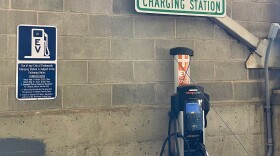New Hampshire’s Executive Council approved $35 million in federal funding on Wednesday to rehabilitate dams across the state.
The Department of Environmental Services has proposed using $30 million on state dam projects and $5 million on projects at the municipal level. The state has identified 12 dams under its oversight that could benefit from this funding and plans to establish a new grant program to determine what projects get funded locally.
The funding for municipalities could also be directed towards dam removal projects, according to the request from state regulators.
A recent Associated Press analysis found that 56 New Hampshire dams are in poor or unsatisfactory condition, up from 37 three years ago.
But even some dams in fair condition are vulnerable. And if some of those dams were to fail, state officials say there could be major consequences for those living downstream – destruction of property or loss of life.
The new funding will go toward dams in poor or unsatisfactory condition, as well as those that pose a high risk if they were to fail.
Corey Clark, an engineer at the Department of Environmental Services’ Dam Bureau, said the Murphy dam in Pittsburg is a perfect example of the kind of structure that could benefit: It’s the biggest dam in the state’s inventory, he said, yet it “hasn't really been touched in 80 years.”
“It's going to cost a large amount of money to even get all the design done for that, so this is going to allow us to do that,” Murphy said.
Gov. Chris Sununu said the funding is part of efforts to rehabilitate dams that go back to the 2005 Alstead dam failure, which claimed the lives of four people and destroyed 71 homes, according to the Keene Sentinel.
“Governor [John] Lynch was very clear, he wanted an assessment on all the dams and the risks. And the state was able to make some small investments over those years,” Sununu said. “But this is an unprecedented opportunity to make real investment.”
The funding is from the American Rescue Plan Act. That comes along with a short timeline, Clark said. Those funds must be allocated by the end of 2024 and spent by the end of 2026.
Clark’s team is planning to build an asset management database to help state regulators prioritize which dams might require future attention.
“All of us at the dam bureau will have an understanding of which ones really need work and which ones are okay,” he said. “But we do need to do a better job of getting that into some sort of system.”
When prioritizing dam projects, Clark said the Department of Environmental Services looks at both the current condition of the structure and the potential consequences if it were to fail. They also look at whether a dam could handle a major storm event – the equivalent of a storm that’s more than twice as intense as a 100-year flood — without overflowing.
The recent increase in the number of insufficient dams in New Hampshire could be attributed to better modeling technology, Clark said. But climate change, which is driving an increase in extreme precipitation in New Hampshire, is also adding its own risks.
“I look back at how dams were designed in the state of New Hampshire 30, 40 years ago. And the rainfall data that they were using then was much less,” he said. “We're dealing with much higher runoff and volumes that we have to then push through the dam.”








